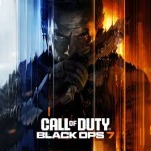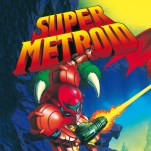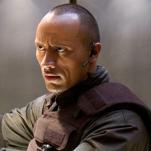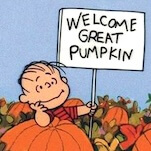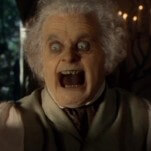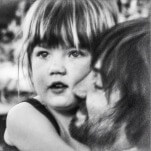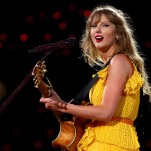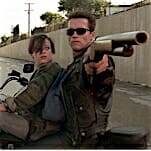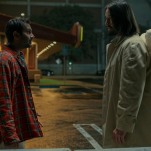Batman Returns at 30: Tim Burton’s Best Dives Headfirst into the Toy Box
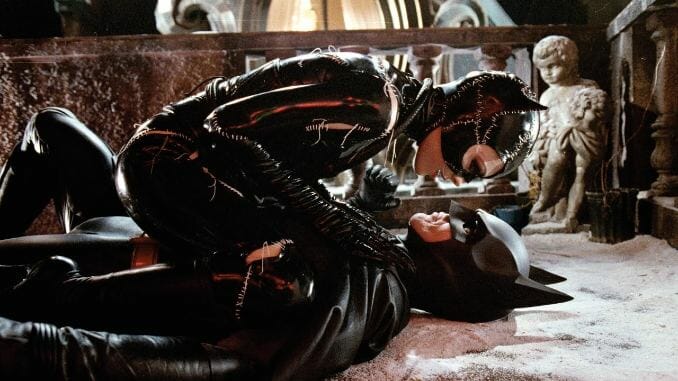
“Things change.” It’s a pithy line delivered by the Penguin (Danny DeVito) to Batman (Michael Keaton), and then, pithier still, from Batman back to the Penguin moments later, in Tim Burton’s Batman Returns. It’s also a simple truism that the movie nonetheless experienced firsthand, as the landscape of summer blockbusters was in the midst of multiple shifts back in 1992. Its general financial success was simultaneously preordained (as the sequel to one of the biggest hits of all time), unusual (as the only big superhero movie of the whole year—imagine!) and a disappointing underperformance (it did not sell as many tickets or, one assumes, as much merchandise as its predecessor). The timing of Batman Returns must have felt perfect. It was released on the same late-June weekend as 1989’s Batman, three years later, after Burton further cemented his general-population fanbase (rare for a director, then and now) with Edward Scissorhands. Yet it was flagrantly out of sync.
Batman Returns is a movie set entirely during the Christmas season, released in the heat of summer, and one whose built-in kid-friendly trappings (Batman; an army of penguins; circus folk) are undermined by bolder sexuality and more explicit violence than its predecessor. The storyline is unapologetically perverse: Batman is confronted with another, more potent mirror image in the (dis)figure of the Penguin, a former rich kid attempting to work his way back into polite society after being cast into the Gotham sewers as a baby (in the movie’s opening sequence, no less!), and is flummoxed by the wilder-card presence of Catwoman (Michelle Pfeiffer), whose undead presence either uses her nine lives or deep psychosis to power through life-threatening injuries.
Though Bo Welch’s stunning art-deco-gothic production design is as distinct as that of any comic book penciller, Batman Returns isn’t especially faithful to the comics, and takes some influence from the ’60s TV show that only becomes more explicit inspiration for the Joel Schumacher sequels that followed. The Penguin’s attempts to become mayor of Gotham City are nicked from an old episode, and some of Catwoman’s quips (“life’s a bitch, now so am I”) could almost pass for TV dialogue, sharpened into claws. The Catwoman/Penguin team-up, too, probably felt familiar to viewers of the old series. This alliance also became ground zero for the once-common complaint that superhero movies have so many villains that the hero gets lost in the shuffle.
Yet Batman Returns does do right by its title character and his alter ego, with some of the best Bruce Wayne moments in the entire Bat-enterprise. When our hero catches sight of the movie’s first Bat-signal, he’s not patrolling the streets, or making a Bruce Wayne appearance on the town. He is sitting in Wayne Manor, in the dark, alone. To understand the value Keaton brings to this thankless role, engage in this thought exercise: Imagine the Batmen played by Ben Affleck and Robert Pattinson sitting alone in the dark, brooding. This should not be difficult to picture; it may even be an actual image from one or both of their turns in the cowl. It may be difficult to picture Pattinson’s emo sensitivity without a nearby stereo playing a Nirvana record (a band contemporary, incidentally, with Batman Returns, if not the vaguely retro Gotham City it depicts). Affleck’s version, meanwhile, would likely project a seething rage, perhaps plotting the senseless Frank Millerified murder of the Green Lantern. Keaton’s Bruce Wayne, though, actually gives the credible impression of thinking.
What he’s thinking about is left somewhat opaque, though Burton makes his challenges clear—and as personal, in his way, as Edward Scissorhands. Like Edward, or Willy Wonka, or Pee-Wee Herman, Burton’s Batman knows his skill set, which consists largely of dispatching goons clad in clown make-up. He’s less certain how to approach Catwoman, with her fully understandable grievances against a corrupt city of men (by day, as Selina Kyle, her nefarious boss is Max Shreck, played by Christopher Walken as, essentially, Donald Trump in a fright wig). Is their mutual interest in dress-up proof that they’re Burtonian misfits, made for each other? Or are they made for no one, doomed to loneliness? The confusing dance between public selves and self-images comes to a head during an actual dance, where Bruce and Selina, who have been dating in their non-prowling hours, simultaneously become aware of each other’s nightlives. It’s woozy, romantic, bittersweet and dangerous; can you think of a recent superhero movie that manages even two of those at once? Fate intervenes, and they’re forced to revisit their conversation later, their emblems in tatters.
-

- Curated Home Page Articles By Test Admin October 21, 2025 | 3:10pm
-

- Curated Home Page Articles By Test Admin October 21, 2025 | 2:57pm
- Urls By Test Admin October 21, 2025 | 2:57pm
- Curated Home Page Articles By Test Admin October 21, 2025 | 2:55pm
-

-

-

-

-

-

-

-

-

-

-

-

-

-

-

-

-

-

-

-

-

-

-

-

-

-

-

-

-

-

-

-

-

-


